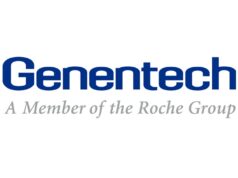 In patients with unknown symptom onset stroke with MRI pattern of DWI-FLAIR-mismatch, treatment with alteplase resulted in better functional outcome than placebo. These benefits were consistent across all categories of outcome and major clinical secondary endpoints.
In patients with unknown symptom onset stroke with MRI pattern of DWI-FLAIR-mismatch, treatment with alteplase resulted in better functional outcome than placebo. These benefits were consistent across all categories of outcome and major clinical secondary endpoints.
The effect size of MRI-guided thrombolysis in unknown symptom onset stroke is comparable to the effect size of thrombolysis <4.5 hours.
The study set out to prove efficacy and safety of MRI-based thrombolysis on patients with unknown time of onset. This is common, with around 17-20% of stroke having an unknown time of onset. Patients often wake-up with stroke, making it impossible to say when onset was. As a result of the WAKE-UP trial these patients can now benefit from intravenous thrombolysis.
The WAKE-UP trial results were presented at European Stroke Organisation Conference (ESOC; 16–18 May 2018, Gothenburg, Sweden) by lead investigator Götz Thomalla, University Medical Centre, Hamburg, Germany.
The European Union–funded study was also published online simultaneously in the New England Journal of Medicine.
“This is the first positive trial of IV thrombolysis in stroke with unknown time of onset and will lead to a paradigm change,” Thomalla said. “It will make a big impact on clinical practice as about 25% of stroke patients have undetermined time of onset, and approximately one third to one half of these will now qualify for the treatment based on these imaging criteria.”
To see whether treatment with alteplase would improve functional outcomes in patients with an unknown time of stroke onset and a mismatch between diffusion weighted imaging and fluid attenuated inversion recovery (FLAIR) findings on MRI, the researchers conducted a randomised control trial.
The patients enrolled had an ischaemic lesion that was visible on MRI diffusion-weighted imaging but no parenchymal hyperintensity on FLAIR, suggesting that the stroke had occurred within the previous 4.5 hours.
Patients who had planned thrombectomies were excluded. For the study, researchers screened 1,362 patients ischaemic stroke of unknown time of onset to identify those with an ischaemic lesion visible on diffusion-weighted MRI but no parenchymal hyperintensity on fluid attenuated inversion recovery (FLAIR).
Of these patients, 503 had suitable imaging results and were randomly assigned to alteplase or placebo. Most patients had mild to moderate strokes.
The primary endpoint was favourable outcome, as defined by a score of 0 or 1 on the mRS, at 90 days. This occurred in 53.3% of the alteplase group and 41.8% of the placebo group (adjusted odds ratio, 1.61; 95% confidence interval [CI], 1.09–2.36; p=0.02).
The secondary outcome was the likelihood that alteplase would lead to lower ordinal scores on the modified Rankin scale compared with placebo.
The shift analysis also showed benefit with alteplase: The median mRS score at 90 days was one in the alteplase group and two in the placebo group (adjusted common odds ratio, 1.62; 95% CI, 1.17 – 2.23; p=0.003).
There was a trend toward increased mortality in the alteplase group, with 10 deaths (4.1%) in patients receiving alteplase vs. 3 (1.2%) in the placebo group (odds ratio, 3.38; 95% CI, 0.92– 2.52; p= 0.07).
In the alteplase group, four deaths were attributed to symptomatic intracranial haemorrhage and one to recurrent ischaemic stroke. The other five deaths were attributed to noncerebral causes unrelated to the initial stroke or treatment.
The rate of symptomatic intracranial haemorrhage was 2.0% in the alteplase group and 0.4% in the placebo group (odds ratio, 4.95; 95% CI, 0.57 – 42.87; p=0.15).










